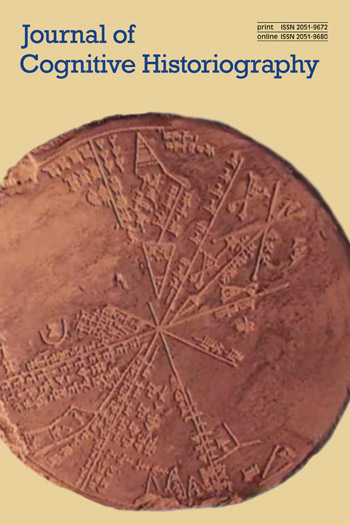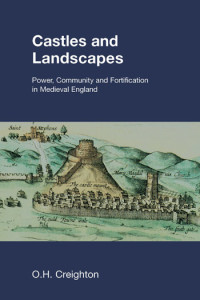The Archaeology and Architecture of Monastic Ireland, 1100-1600
Tadhg O’Keeffe [+–]
UCD School of Archaeology
View Website
I am a first-generation Dubliner; my late father was born in Kilworth, county Cork, and my mother in Tullamore, county Offaly. I graduated from UCD with a BA (1st class hons) in Archaeology and Geography in 1983. Encouraged by Professor Michael Herity, I successfully completed the two-year MA in Archaeology in one year (1984; 1st class hons), for which I was awarded the NUI’s three-year Travelling Studentship in Archaeology. I went to the University of Durham in 1985-86 (where Professors Rosemary Cramp and Brian Roberts of the Departments of Archaeology and Geography respectively provided inspirational mentorship and still-appreciated friendship), the Courtauld Institute of Art in the University of London in 1986-87, and the Centre d’Études Supérieures de Civilisation Médiévale, Université de Poitiers, in 1987-88 (where Professors Piotr Skubiszewski and Marie-Thérèse Camus were as kind as they were erudite). In 1988 I was awarded a DEA in the History of Art by Poitiers. I returned to UCD in 1988 for my PhD in Archaeology, for which I was very pleased to have Prof. Herity as supervisor, and I presented my thesis, Irish Romanesque Architecture and Architectural Sculpture, in 1991, with Dr Richard Gem as the external examiner. I joined the Department (now School) of Archaeology in UCD as a post-doctoral Newman Scholar in 1994. I achieved my ambition to teach in academia when I was appointed to a temporary lectureship (to teach the Bronze Age!) in 1996 and a permanent lectureship (to teach medieval archaeology) in 1998. I was promoted to Senior Lecturer four years later, and to Associate Professor four years later again. For three years (2004-6) I was Director of the UCD International Summer School. I was awarded a UCD President’s Research award in 2002-3 and an IRCHSS Senior Research Fellowship in 2008-9, and was elected a Fellow of the Society of Antiquaries of London (FSA) in 2007. I was the Head of the School of Archaeology from 2011-2014, and I am currently Deputy Principal in the College of Arts & Celtic Studies.
Monastic life, guided by the templates laid down by two of the early church’s great intellectual heavyweights, SS Benedict and Augustine, was a career option for generations of scions of well-to-do medieval families. The choices were many. Those entering monastic life could choose to be canons (or canonesses) or monks, or preachers or hospitallers. Depending on their choice, they could live in the centres of towns and participate in civic life, they could bear arms on the medieval frontier, or they could remove themselves to remote and isolated rural settings for the full apostolic experience. They could aspire to promotion to abbacies and priorships; some might even have fantasised about episcopal office.
Ireland, geographically at Europe’s periphery but cognitively at the core of its Christian tradition, is an ideal laboratory in which to study medieval monasticism as a social phenomenon that simultaneously shaped and was shaped by those who opted for a life within it. This book surveys the physical residue of monastic Ireland – its archaeology, in other words – between the early twelfth century, when church reform paved the way for new monastic congregations following the rules of Benedict and Augustine, and the late sixteenth-century aftermath of Henry VIII’s suppression of religious houses. It explores the relationships between the missions, imaginations and materialities of the communities and of the individuals who ceded their lives to these regulated collectives.
Table of Contents
Introduction
What monastic orders are known in medieval Ireland, and how and when were they introduced? Did ethnic identity impact on allegiance to monastic orders? Why did mendicantism enjoy a late medieval flowering in Ireland? What was the reality of dissolution for monastic communities?
Part I: Themes
The essence of monasticism is regulation: a prescribed rule is followed. The essence of a monastic settlement is also regulation: monastic buildings follow a consistent spatial pattern. The submission of individuals to regulated life is intrinsically interesting, and is made more interesting by evidence of the strategies – the sign language in silent orders, for example – that monastics adopted to survive, even subvert, regulation. This chapter considers the concept and reality of regulated community life through the lens of anthropological theory.
Monasteries were set in landscapes that were exploited directly or indirectly: for example, Cistercian monks farmed land that they held whereas Franciscan friars collected their alms from those who inhabited or passed through their mainly sub-urban landscapes. This chapter analyzes such strategies of exploitation, and it assesses the importance of accessibility and visibility in the design and siting of monastic houses.
The customary gifts made by secular lords to monasteries ranged from the tithes of parish churches, the priests of which were monastic appointees, to fishing rights. Such gifts are known, respectively, as spiritualities and temporalities. This chapter examines their geography and materiality.
Monastic orders in Ireland generally employed the pan-European claustral (cloister-based) plan. This chapter maps the variation in the execution of this plan-type and considers how orders consciously articulated their identity through such variation. The chapter also discusses how the patterns in the adoption of styles of Gothic architecture from c.1200 to the sixteenth century relate to ethnic identity.
This chapter maps the burial places of members of monastic communities and of the secular founders of those communities, and it discusses the monuments – effigial and otherwise – of remembrance. It also reviews the evidence for chantry chapels attached to monastic houses.
Part II: Case Studies
Much-studied but still not fully understood is the architectural tradition of the late 1100s and early 1200s in western Ireland that is known as the ‘School of the West’, in which forms and motifs of English Gothic origin infiltrate late Romanesque architectural contexts. This chapter looks at this architecture in its monastic contexts.
The great Anglo-Norman lordship of Meath, established by Hugh de Lacy in the late twelfth century, is selected a regional case-study. Special attention is paid to the lordship’s early Gothic architecture.
The western Irish province of Connacht was settled by Anglo-Normans in the second quarter of the thirteenth century, around the same time as the mendicant congregations were being introduced into Ireland. This chapter reviews both the place of the friars in the colonial settlement of the province in the thirteenth century, and the floruit of mendicantism under Gaelic-Irish lordship later in the middle ages.
What exactly happened to monasteries after their suppression by Henry VIII? This chapter looks closely at the fate of urban monasteries from different parts of Ireland, and considers the place of the process of dissolution in the shaping of early modern Ireland.
Conclusion
This concluding chapter returns to the anthropological theme developed earlier to draw some broad conclusions about monasticism in high medieval Ireland and to map out future research priorities.








